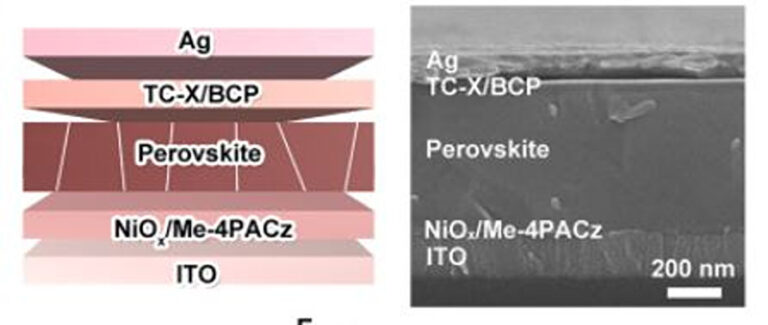An international team has used an N-type polymer-additive to stabilize C60 molecules for use in reverse perovskiet PV cells. Thanks to this approach, the researchers built a solar cell with the highest efficiency value ever registered for perovskiet devices based on solutions processed C60 electron transmission layers.
An international research team has manufactured a reverse perovskiet solar cell that can achieve remarkable efficiency of power conversion thanks to an optimized Buckminsterfullere (C60) Electron transport layer (ETL).
Reverse perovskiet cells have a device structure that is known as “pin”, where hole-selective contact P is at the bottom of intrinsic perovskiet layer I with electron transport layer N at the top. Conventional halogenide perovskiet cells have the same structure but vice versa – a “NIP” layout. In NIP architecture, the solar cell is illuminated by the electron transport layer (ETL) side; In the PIN structure it is enlightened by the surface of the hole transport layer (HTL).
The group explained that c60 is currently the best -performing type of ETL for perovskite solar cells, although it suffers from “significant” aggregation in solution, which makes a high cost and complex thermal evaporation method needed for its development. To solve this problem, the use of an N-type polymer additive to stabilize C60 Molecules for processing solutions.
“We have introduced an N-type polymer additive, TPDI-BTI, constructed from the highly electron-deficient ditylpyraziniImide (TPDI) and the imid-functionalized bithiophene (BTI) co-unit and applied in the C60 ETLs, “the researchers explained. “Door de TPDI-BTI-toevoeging te regelen, kunnen we systematisch de ETL’s reguleren, waaronder filmvormbaarheid en morfologische stabiliteit, energieniveaus en elektrontransportdynamiek, intermoleculair interactie-gedrag en interfaciale contacten, en ten slotte de fotovoltaïsche prestaties en de langdurige stabiliteit van de stabiliteit van The long -term cells. “
After the calibration of the new ETLs, the research team built a solar cell with a substrate made of indium tinoxide (ITO), a hole transport layer (HTL) made of nickel (II) oxide (NIOX) and phosphonic acid called methyl substiTuted carbazole (me-4pacz)a perovskiet -absorber, The optimized C60 ETL, a buffer layer of Tinoxide (SNOX), A Bathocuprine (BCP) buffer layer and a silver (AG) metal contact.
Tested under standard lighting conditions, the device achieved a maximum power conversion efficiency of 25.60%, the scientists said C60 ETLS. The cell also showed “superior” stability under continuous light lighting for 1,800 hours and at high temperature for 700 hours.
The solar cell was presented in “Solve and stabilize C60 With N-type polymer, efficient reverse perovskite makes solar cells possible‘Published in Joule. The team included Academics of the Fujian Normal University, Southern University of Science and Technology (Sustch) and Xiamen University in China, as well as the École Polytechnique Fédérale de Lausanne (EPFL) of Switzerland, the Imam Abdulrahman Bin Faisalhman Institute of Chemical Sciences and Technologies Giulio Natta.
“This work shows the great potential of C60-Polymer mixed ETLs for the development of cheap, highly efficient and stable fully solution-processed perovskite solar cells, “the research team concluded.
This content is protected by copyright and may not be reused. If you want to work with us and reuse part of our content, please contact: editors@pv-magazine.com.


